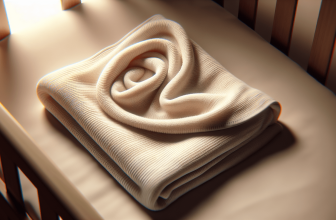Taking care of your baby’s hair can be a delightful experience filled with tender moments. However, when cradle cap, a common scalp condition in infants, makes an appearance, it can be a cause for concern for many parents. But worry not! With gentle baby hair care routines specifically designed to tackle cradle cap, you can help soothe your little one’s scalp while maintaining their precious locks. From using gentle shampoos to massaging their scalp with natural oils, these routines are not only effective but also promote bonding moments with your bundle of joy. So, let’s explore these gentle baby hair care routines that will leave your little one’s scalp happy and healthy.

Understanding Cradle Cap
What is cradle cap?
Cradle cap, also known as seborrheic dermatitis, is a common skin condition that appears on the scalp of babies. It is characterized by crusty, greasy, or scaly patches on the baby’s scalp. While cradle cap is not contagious or harmful to the baby’s health, it can be quite unsightly and may cause mild discomfort for the baby.
Causes of cradle cap
The exact cause of cradle cap is not known, but it is believed to result from the overproduction of sebum, a natural oil produced by the sebaceous glands in the scalp. This excessive production of sebum can lead to the accumulation of dead skin cells, forming the characteristic crusty patches seen in cradle cap. Hormonal changes or imbalances in the baby’s body may also contribute to the development of cradle cap.
Symptoms of cradle cap
Cradle cap is typically identified by its appearance. The affected areas on the baby’s scalp may be yellowish or brownish in color and may feel greasy or waxy to the touch. In some cases, the patches may extend beyond the scalp, appearing on the forehead, eyebrows, or behind the ears. While cradle cap itself is not usually itchy, it may cause mild irritation or discomfort for the baby.
Importance of Gentle Hair Care
Why gentle hair care is important for babies with cradle cap
When dealing with cradle cap, it is essential to prioritize gentle hair care for your baby. The delicate and sensitive scalp of infants requires extra care and attention. Harsh hair care practices or products can aggravate the condition, leading to further discomfort for your little one. Gentle hair care not only helps in managing cradle cap but also promotes a healthy and comfortable scalp for your baby.
Benefits of gentle hair care
Implementing a gentle hair care routine for babies with cradle cap offers several benefits. Firstly, it prevents further irritation or inflammation of the affected areas on the scalp. Gentle care also helps to maintain the natural moisture balance of the scalp and reduces the risk of dryness or excessive oiliness. Additionally, gentle hair care promotes healthy hair growth and overall skin health in your baby.
Choosing the Right Products
Avoiding harsh chemicals
When choosing hair care products for your baby, it is crucial to avoid using products that contain harsh chemicals. Ingredients such as sulfates, parabens, and artificial fragrances may strip away natural oils from the scalp and irritate the already sensitive skin. Opting for gentle and mild products specifically formulated for babies is a safer choice.
Opting for natural and gentle ingredients
To ensure the well-being of your baby’s scalp, look for products that are made with natural and gentle ingredients. Ingredients like aloe vera, chamomile, and oatmeal have soothing properties that can help alleviate cradle cap symptoms. Natural oils such as coconut oil or almond oil can provide nourishment and moisture to the scalp, promoting a healthier scalp environment.
Products specifically designed for cradle cap
There are several baby care brands that offer products specifically designed for cradle cap. These products often contain gentle exfoliating agents or natural ingredients that can help remove the crusty patches and soothe the affected areas. Look out for shampoos, creams, or oils that are labeled as suitable for cradle cap to effectively manage the condition.
Daily Hair Care Routine
Gentle brushing techniques
Incorporating gentle brushing techniques into your baby’s daily hair care routine is essential for managing cradle cap. Use a soft baby brush with gentle bristles to carefully brush your baby’s scalp and hair. This helps to remove any loose scales or flakes and improves blood circulation in the scalp, promoting a healthier scalp environment.
Using a soft baby brush
Investing in a soft baby brush is a great choice for babies with cradle cap. The soft bristles ensure that the baby’s delicate scalp is not further irritated or scratched. Gently combing through the hair can help dislodge the crusty patches and encourage them to loosen and fall off.
Avoiding excessive shampooing
While it is important to keep your baby’s scalp clean, excessive shampooing can actually worsen cradle cap. Washing your baby’s hair too frequently can strip away the natural oils and disrupt the balance of the scalp. Stick to a gentle shampooing routine, preferably every two to three days, to maintain cleanliness without causing further irritation.
Using lukewarm water for bathing
Opt for lukewarm water while bathing your baby with cradle cap. Hot water can be harsh on the delicate scalp and may exacerbate the condition. Lukewarm water helps to open up the hair follicles and makes it easier to remove any scales or flakes from the scalp.

Preventing Flare-ups
Keeping the scalp clean and moisturized
Maintaining a clean and moisturized scalp is crucial for preventing flare-ups of cradle cap. Regularly cleanse your baby’s scalp with a mild baby shampoo or cleanser, ensuring that all residue is thoroughly rinsed off. After shampooing, apply a gentle moisturizer or natural oil to keep the scalp moisturized and prevent excessive dryness.
Applying natural oils
Natural oils can be incredibly beneficial in managing and preventing cradle cap. Apply a small amount of coconut oil, olive oil, or almond oil to your baby’s scalp and gently massage it in. Natural oils help to loosen and soften the crusty patches, making them easier to remove during regular hair care routines.
Avoiding tight hats or headbands
Tight hats or headbands can contribute to the development of cradle cap by preventing proper air circulation and trapping moisture on the scalp. Opt for loose-fitting caps or headbands to allow the scalp to breathe. This reduces the likelihood of excessive oil buildup and helps to prevent flare-ups of cradle cap.
Special Treatments to Try
Using a cradle cap brush or comb
A cradle cap brush or comb can be a useful tool in managing cradle cap. These specially designed brushes or combs have gentle bristles that help to loosen the scales and flakes from the scalp. Gently brush or comb your baby’s scalp in a circular motion to remove the crusty patches effectively.
Applying gentle exfoliating treatments
Gentle exfoliating treatments can be used occasionally to remove the stubborn crusty patches of cradle cap. You can make a gentle exfoliating paste using natural ingredients like baking soda or oatmeal. Rub the mixture onto the scalp in a gentle circular motion, then rinse thoroughly. Remember to moisturize the scalp afterward to prevent dryness.
Trying medicated shampoos under medical supervision
In some cases, when home remedies or gentle care routines do not provide relief from cradle cap, medicated shampoos may be prescribed by a pediatrician or dermatologist. Medicated shampoos usually contain ingredients like ketoconazole or coal tar, which help to address the underlying causes of cradle cap. It is important to use these shampoos under medical supervision to ensure safety and effectiveness.

Tips for Dealing with Stubborn Cradle Cap
Patience and consistency
Dealing with stubborn cradle cap requires patience and consistency. It may take some time for the crusty patches to completely disappear. Be gentle and consistent in your approach, following the recommended hair care routine and using appropriate products. Over time, with consistent care, the condition will gradually improve.
Avoiding picking or scratching
As tempting as it may be, avoid picking or scratching at the crusty patches of cradle cap. This can cause further irritation and may introduce bacteria, leading to potential infections. Instead, focus on gentle hair care techniques and treatments to gradually and safely remove the crusty patches.
Consulting a pediatrician or dermatologist
If you find that your baby’s cradle cap is persistent, severe, or accompanied by other concerning symptoms, it is important to consult a pediatrician or dermatologist. They will be able to provide a proper diagnosis and recommend further treatment options or medical interventions if necessary.
Home Remedies
Coconut oil massage
Coconut oil has natural antifungal and antimicrobial properties, making it an excellent home remedy for cradle cap. Before bedtime, gently massage a small amount of coconut oil onto your baby’s scalp, focusing on the affected areas. Leave it on overnight and wash it off in the morning with a gentle baby shampoo.
Olive oil and honey mask
An olive oil and honey mask can help loosen and remove the crusty patches of cradle cap. Mix equal parts olive oil and honey to create a thick paste. Apply the paste to the scalp, focusing on the affected areas, and let it sit for about 15 minutes. Rinse the scalp thoroughly with lukewarm water and gently brush or comb to remove any loosened scales.
Gentle baking soda scrub
Baking soda can act as a gentle exfoliant to remove the crusty patches of cradle cap. Mix a small amount of baking soda with water to create a paste. Apply the paste to the scalp and gently massage it in circular motions for a few minutes. Rinse the scalp thoroughly and follow up with a gentle moisturizer or natural oil.
When to Seek Medical Advice
Persistent or severe cradle cap
If your baby’s cradle cap does not improve or seems to be worsening despite gentle care and home remedies, it is advisable to seek medical advice. This may be an indication of a more severe underlying condition that requires medical intervention.
Infections or bleeding
If you notice any signs of infection, such as oozing, redness, swelling, or a foul odor, it is important to consult a healthcare professional immediately. In rare cases, cradle cap can become infected, and prompt medical attention is necessary to prevent complications.
Lack of improvement with home remedies
If you have tried various home remedies and gentle care routines for an extended period but see no improvement in your baby’s cradle cap, it is recommended to consult a pediatrician or dermatologist. They can provide a personalized treatment plan or recommend alternative options to manage the condition effectively.
Conclusion
Gentle care is key when dealing with cradle cap in babies. By understanding the nature of cradle cap and following a consistent and gentle hair care routine, you can promote a healthy and comfortable scalp for your little one. Choosing the right products, implementing gentle brushing techniques, and utilizing home remedies can significantly help manage and prevent flare-ups of cradle cap. Remember, if your baby’s cradle cap persists or worsens, seeking medical advice is always a prudent step to ensure the well-being of your baby.








